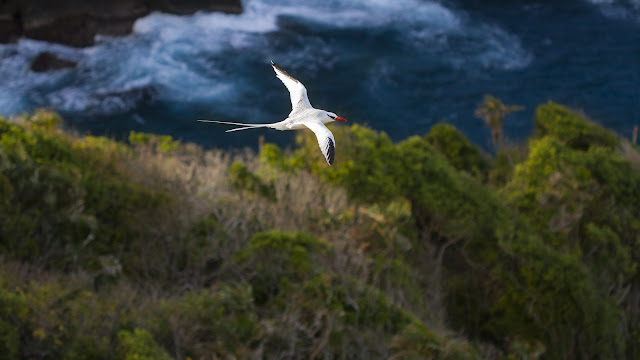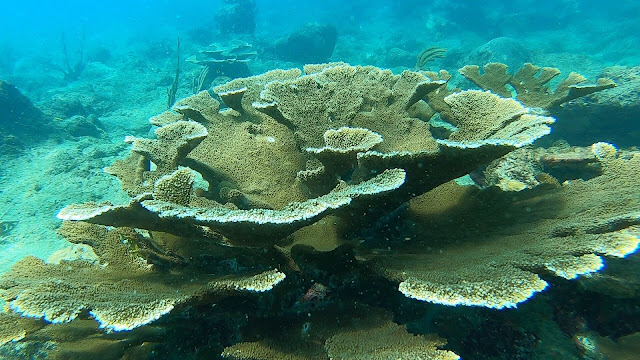The Song of the Pawi
Let’s go with Faraaz Abdool, photographer and wildlife advocate to find one of Trinidad’s irreplaceable wild treasures.
The remote reaches of Trinidad’s heavily forested Northern Range conceal a unique treasure that can be found nowhere else on the planet. Here, verdant hills rise sharply from rugged coastlines, the seaspray-coated vegetation gives way as altitude increases to towering crappo followed by massive mora. These heavily buttressed trees are the stewards of the forest, their limbs festooned with moss and lichen. Their branches are punctuated by bromeliads that push forward spectacular flowers and host entire ecosystems within their leaf-vase structure. The air within these forests remains cool and moist throughout the year, the sounds of water - whether from rain, river, or distant ocean - are constant. Occasionally, just at the crack of dawn, a delicate whistle rises from the green tangle of the jungle and wafts over the canopy - an indication of the presence of Trinidad’s only endemic bird species: the Trinidad Piping-Guan.

The bromeliad holds
just enough water for a thirsty Trinidad Piping-Guan. Photo by Faraaz Abdool
This short, rising whistle is known as “piping”, and while popularly associated with the species, it isn’t the only sound it produces. Another of its characteristic sounds isn’t produced by its vocal cords at all, but by its wing feathers. Performed while gliding from tree to tree, a loud clap is made followed by a series of percussive notes that sounds much more like a motorized scooter than a bird. This sound is created by rapid vibration of its wing feathers while in flight. Keen observers following a gliding guan with binoculars would be able to see the whirring of the wings responsible for this drumming that can be heard up to a kilometre away.
Guans are social birds, and our Trinidad Piping-Guan – known locally as “Pawi” - is no different. In fact, its gregarious nature has played a significant part in its precipitous decline at the hands of hunters. The deleterious impact of hunting the Pawi was initially noted in 1894, but nothing was done until 1963, when it was declared officially protected. Legality did very little to alleviate the hunting pressure, however, and the species continued to diminish. Although it was historically fairly common and widespread across all of forested Trinidad, it began to vanish from the areas populated by humans first. Retreating to quieter areas, it was already designated as Critically Endangered from the moment scientists realised it was a distinct species endemic to the island. Prior to this, it was thought that several similar-looking piping-guans were a single species. Today, we know that there are five species of piping-guans, the Pawi being the sole representative that does not reside in South America, and the only guan in the Caribbean.

Sightings like
this one of a mother Pawi with two healthy chicks should be more frequent if we
can ensure the safety and protection of this species. Photo by Faraaz Abdool
While we acknowledge the Pawi to be restricted to the densely forested Northern Range, it is also known to populate secondary growth and areas where forest was removed for agriculture. This indicates that they can easily live - and even thrive - alongside small-scale, sustainable human settlements. We must, however, endeavour to give them the peace they deserve. When in the company of the Pawi, we are afforded the opportunity to glimpse a forgotten world, an ancient and holy vista where these modern-day dinosaurs operate within a socially complex matrix. Observing them affords completely novel and often significant insights.
For example, a Pawi grabbing a drink involves a surprising source and the reason for its dependence upon healthy, moist forest: bromeliads. These natural, arboreal pools are fountains for thirsty birds keen on getting a sip of water but unwilling to venture to the ground. In fact, the guan family isn’t known for frequenting the forest floor. A study on a group of Pawi revealed that they spent just about 0.2% of their time on the ground. Many patient observers before and after that study have noted that Pawi will descend to ground level only when they feel confident in the safety of their surroundings. Once comfortable, the birds forage freely, their rose-tinted legs carrying them comfortably across terra firma.
In groups like this, much socialising takes place. If the environment is quiet enough, one would be able to discern a wide assortment of soft clicks and whistles as the birds interact with one another. Without hearing these low-volume sounds, it is easy to assume that they are simply foraging, or walking around aimlessly. Social interaction becomes apparent when two birds approach each other, crests raised, then jumping at each other feet-first. Much more than this, the birds are consistently communicating. With such a limited global population, we need to continue observing them as closely as possible before they are lost forever. There is no hope of learning without observation; fortunately there are many who have a serious interest in observing the Pawi. Some are researchers, many others are ecotourists.
Ecotourism is a potent agent for conservation and equity; and the charming coastal village of Grande Riviere on Trinidad’s north coast is an established hub for local ecotourism. Its worldwide popularity due to nesting Leatherback Turtles means that the village is already equipped to cater for visitors. Grande Riviere also happens to be the epicentre of the Pawi population, and visiting birders already flock to the village every year. The economic importance of not only the Pawi but its continued success cannot be denied.
It is imperative that we cease persecuting a species that already teeters on the edge of extinction. While habitat loss is a specific hardship endured by the species, it is hunting that has historically pushed the Pawi to the brink. Thanks to determined education efforts by devoted conservation groups over the years, attitudes have changed and many citizens are now aware of the ecological and economic value of the Pawi. Nevertheless, poaching still occurs.
Conservation of precious wildlife like the Pawi is gaining ground slowly in the right direction. Surely, that the Pawi and the Leatherback Turtle make this island their home can be counted among the riches that our nation possesses.





Comments
Post a Comment